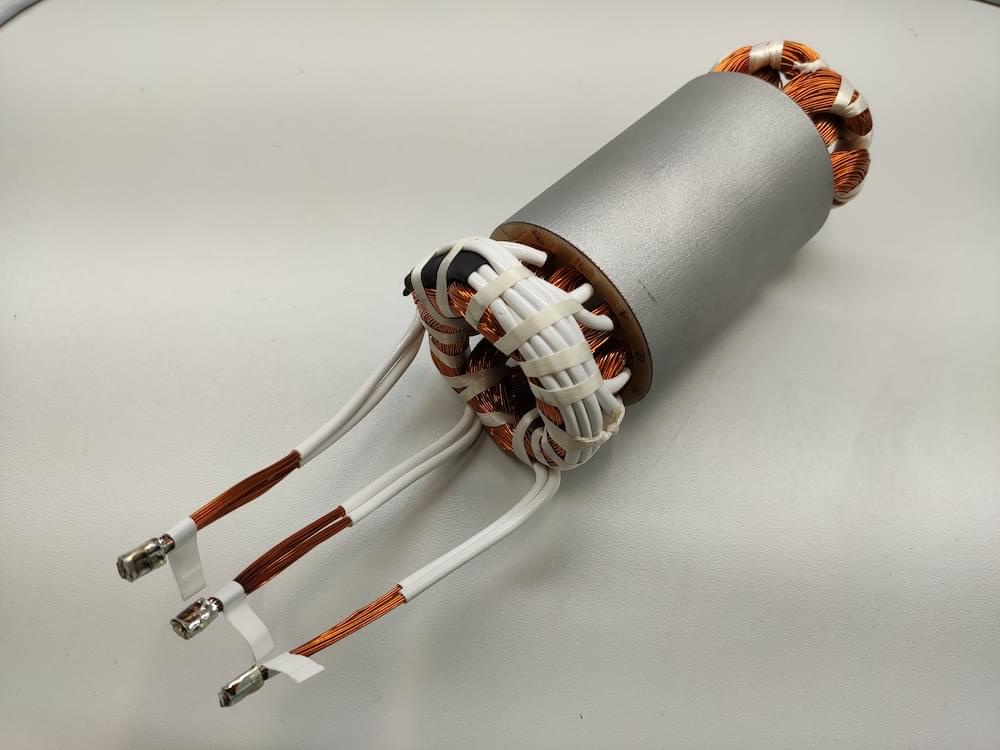Get the latest international news and world events from around the world.





First steps towards high-speed motors for fuel cell components
The transport sector is transforming towards climate-friendly powertrains with significantly reduced CO 2 emissions. The electrification of powertrains remains a major challenge not only for trucks, buses, trains, and ships but also for aircraft. These applications cannot be realized in the future with batteries because of the energy requirements. The fuel cell is an extremely promising energy supplier for these applications, which supplies electrical energy from stored hydrogen and ambient air.
Fraunhofer Institutes LBF, IFAM, IISB, and SCAI joined their forces to develop advanced and highly efficient components for fuel cells. The project HABICHT aims to design and develop a high-speed motor for a fuel cell compressor to enable innovation in the utility vehicle and aviation domain. The electric machine should at least achieve apower density of 30 kW/kgby using innovative materials for direct cooling of the stator and maximizing the rotor’shigh-speed capability (150.000 rpm). The rotor design will use a new manufacturing process to glue and pot the magnets to be suitable for high circumferential speeds.
Prototype of a high-speed motor for a fuel cell compressor. (Image: Project HABICHT)

Quantum computer works with more than zero and one
We all learn from early on that computers work with zeros and ones, also known as binary information. This approach has been so successful that computers now power everything from coffee machines to self-driving cars and it is hard to imagine a life without them.
Building on this success, today’s quantum computers are also designed with binary information processing in mind. “The building blocks of quantum computers, however, are more than just zeros and ones,” explains Martin Ringbauer, an experimental physicist from Innsbruck, Austria. “Restricting them to binary systems prevents these devices from living up to their true potential.”
The team led by Thomas Monz at the Department of Experimental Physics at the University of Innsbruck, now succeeded in developing a quantum computer that can perform arbitrary calculations with so-called quantum digits (qudits), thereby unlocking more computational power with fewer quantum particles. Their study is published in Nature Physics.

The Time for Carbon Labelling is Now
Carbon labelling gives consumers a weapon to fight climate change at the cash register.
What’s Involved with Carbon Labelling
Today, nutritional and content labelling can be found on packaged foods. The Government recently announced plans to enhance those labels. Why, because of concerns that Canadians need to learn more about what they eat so that they can make healthier choices.
Carbon labelling would serve a similar purpose by allowing Canadians to make healthier choices about carbon emissions. A carbon label would let consumers understand the environmental impact of items they purchase and consume. The label would contain the total carbon footprint of the product.


I did not know that!
“Since her death in 1979, the woman who discovered what the universe is made of has not so much as received a memorial plaque. Her newspaper obituaries do not mention her greatest discovery. […] Every high school student knows that Isaac Newton discovered gravity, that Charles Darwin discovered evolution, and that Albert Einstein discovered the relativity of time. But when it comes to the composition of our universe, the textbooks simply say that the most abundant atom in the universe is hydrogen. And no one ever wonders how we know.“
–
Jeremy Knowles, discussing the complete lack of recognition Cecilia Payne gets, even today, for her revolutionary discovery. (via alliterate)
OH WAIT LET ME TELL YOU ABOUT CECILIA PAYNE.
Cecilia Payne’s mother refused to spend money on her college education, so she won a scholarship to Cambridge.
Cecilia Payne completed her studies, but Cambridge wouldn’t give her a degree because at that time there’s not much exposure for woman, so she said to heck with that and moved to the United States to work at Harvard.
Cecilia Payne was the first person ever to earn a Ph.D. in astronomy from Radcliffe College, with what Otto Strauve called “the most brilliant Ph.D. thesis ever written in astronomy.”
Not only did Cecilia Payne discover what the universe is made of, she also discovered what the sun is made of (Henry Norris Russell, a fellow astronomer, is usually given credit for discovering that the sun’s composition is different from the Earth’s, but he came to his conclusions four years later than Payne–after telling her not to publish).
Cecilia Payne is the reason we know basically anything about variable stars (stars whose brightness as seen from earth fluctuates). Literally every other study on variable stars is based on her work.